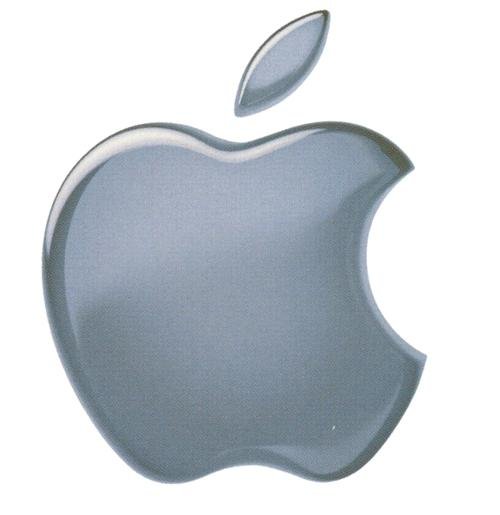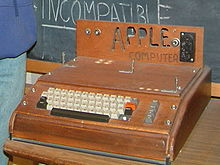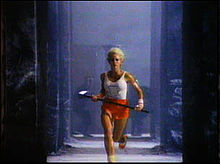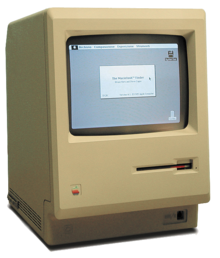

Apple Inc., formerly Apple Computer, Inc., is an American multinational corporation headquartered in Cupertino, California that designs, develops, and sells consumer electronics, computer software and personal computers. Its best-known hardware products are the Mac line of computers, the iPod music player, the iPhone smartphone, and the iPad tablet computer. Its software includes the OS X and iOS operating systems, the iTunes media browser, the Safari web browser, and the iLife and iWork creativity and production suites. The company was founded on April 1, 1976, and incorporated as Apple Computer, Inc. on January 3, 1977. The word "Computer" was removed from its name on January 9, 2007, reflecting its shifted focus towardsconsumer electronics after the introduction of the iPhone.
Apple is the world's second-largest information technology company by revenue after Samsung Electronics, and the world's third-largest mobile phone maker after Samsung and Nokia. Fortune magazine named Apple the most admired company in the United States in 2008, and in the world from 2008 to 2012. However, the company has received criticism for its contractors' labor practices, and for Apple's own environmental and business practices.
As of November 2012, Apple maintains 394 retail stores in fourteen countries as well as the online Apple Store and iTunes Store. It is thesecond-largest publicly traded corporation in the world by market capitalization, with an estimated value of US$414 billion as of January 2013.[22] As of September 29, 2012, the company had 72,800 permanent full-time employees and 3,300 temporary full-time employees worldwide.Its worldwide annual revenue in 2012 totalled $156 billion.
History
1976–80: Founding and incorporation

The Apple I, Apple's first product, was sold as an assembled circuit board and lacked basic features such as a keyboard, monitor, and case. The owner of this unit added a keyboard and a wooden case.
Apple was established on April 1, 1976, by Steve Jobs, Steve Wozniak and Ronald Wayne. to sell the Apple I personal computer kit. The kits were hand-built by Wozniak and first shown to the public at the Homebrew Computer Club. The Apple I was sold as a motherboard (with CPU, RAM, and basic textual-video chips), which is less than what is today considered a complete personal computer. The Apple I went on sale in July 1976 and was market-priced at $666.66 ($2,690 in 2013 dollars, adjusted for inflation.)
Apple was incorporated January 3, 1977, without Wayne, who sold his share of the company back to Jobs and Wozniak for $800. Multi-millionaire Mike Markkulaprovided essential business expertise and funding of $250,000 during the incorporation of Apple.
The Apple II was introduced on April 16, 1977, at the first West Coast Computer Faire. It differed from its major rivals, the TRS-80 and Commodore PET, due to its character cell-based color graphics and an open architecture. While early models used ordinary cassette tapes as storage devices, they were superseded by the introduction of a 5 1/4 inch floppy disk drive and interface, the Disk II.
The Apple II was chosen to be the desktop platform for the first "killer app" of the business world, VisiCalc, a spreadsheet program. VisiCalc created a business market for the Apple II and gave home users compatibility with the office, an additional reason to buy an Apple II. Apple was a distant third place to Commodore and Tandy until VisiCalc came along.
By the end of the 1970s, Apple had a staff of computer designers and a production line. The company introduced the ill-fated Apple III in May 1980 in an attempt to compete with IBM and Microsoft in the business and corporate computing market.
Jobs and several Apple employees, including Jef Raskin, visited Xerox PARC in December 1979 to see the Xerox Alto. Xerox granted Apple engineers three days of access to the PARC facilities in return for the option to buy 100,000 shares (800,000 split-adjusted shares) of Apple at the pre-IPO price of $10 a share. Jobs was immediately convinced that all future computers would use a graphical user interface (GUI), and development of a GUI began for the Apple Lisa.
On December 12, 1980, Apple went public at $22 per share, generating more capital than any IPO since Ford Motor Company in 1956 and instantly creating more millionaires (about 300) than any company in history.
1981–85: Lisa and Macintosh

Apple's "1984" television ad, set in a dystopian future modeled after the George Orwell
novel Nineteen Eighty-Four, set the tone for the introduction of the Macintosh.
Steve Jobs began working on the Apple Lisa in 1978, but in 1982, he was pushed from the Lisa team due to infighting. Jobs took over Jef Raskin's low-cost-computer project, the Macintosh. A race broke out between the Lisa team and the Macintosh team over which product would ship first. Lisa won the race in 1983 and became the first personal computer sold to the public with a GUI, but was a commercial failure due to its high price tag and limited software titles.

The first Macintosh, released in 1984
In 1984, Apple next launched the Macintosh. Its debut was announced by the now famous $1.5 million television commercial "1984". It was directed by Ridley Scott and was aired during the third quarter of Super Bowl XVIII on January 22, 1984. It is now hailed as a watershed event for Apple's success and a "masterpiece".
The Macintosh initially sold well, but follow-up sales were not strong due to its high price and limited range of software titles. The machine's fortunes changed with the introduction of the LaserWriter, the first PostScript laser printer to be offered at a reasonable price, and PageMaker, an early desktop publishing package. It has been suggested that the combination of these three products was responsible for the creation of the desktop publishing market. The Mac was particularly powerful in the desktop publishing market due to its advanced graphics capabilities, which had necessarily been built in to create the intuitive Macintosh GUI.



















